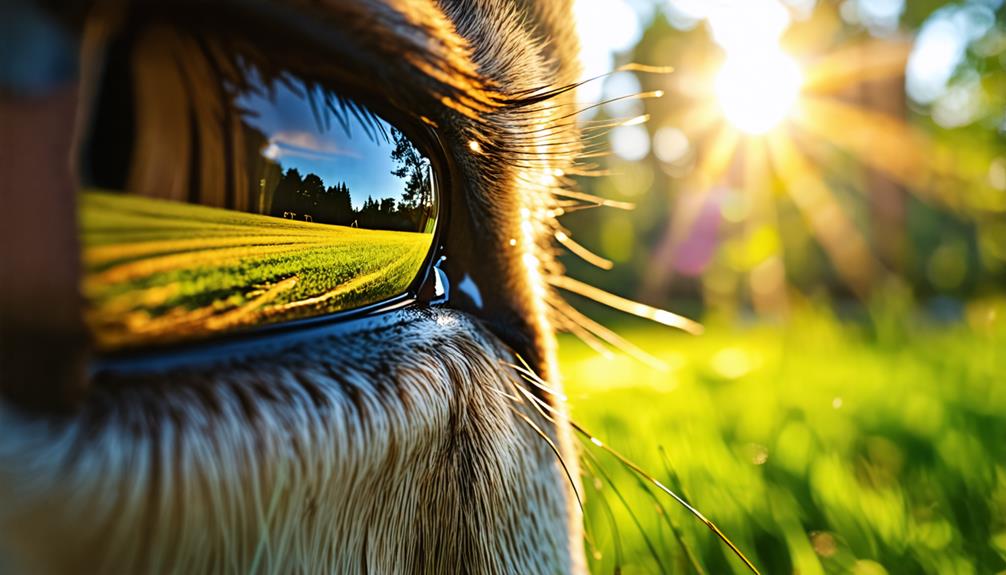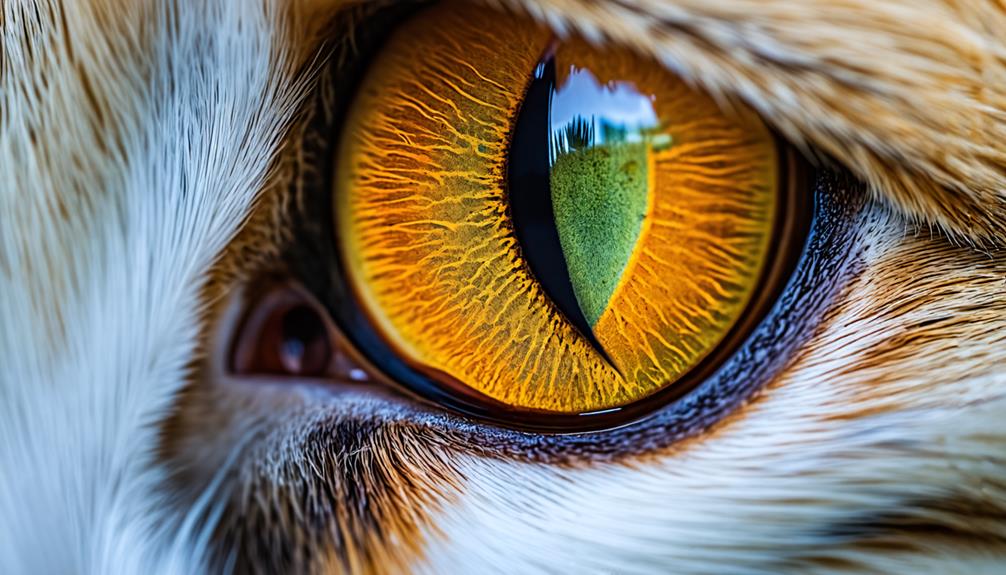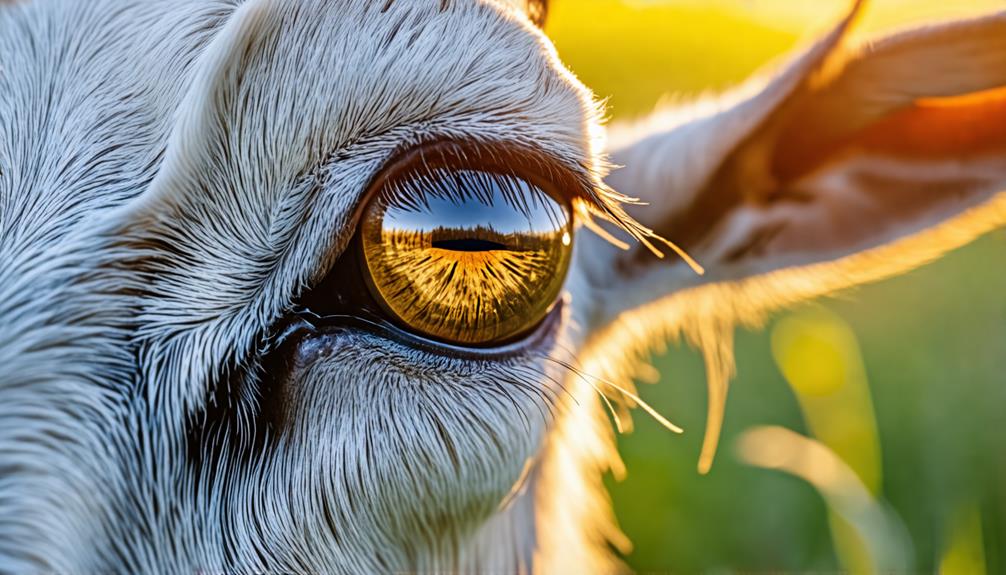You've probably never given much thought to a goat's eyes, but they're more fascinating than you might imagine. Those rectangular pupils aren't just a quirky feature; they're a marvel of evolution that gives goats a significant advantage in the wild. With an astounding 340-degree field of view, these herbivores can spot danger from nearly any direction while grazing. But that's not all – their unique eye structure offers benefits beyond simple predator detection. If you're curious about how these peculiar pupils affect a goat's daily life and why other animals haven't developed similar adaptations, you'll want to explore this topic further.
Key Takeaways
- Goats' rectangular pupils provide a 340-degree panoramic view for enhanced predator detection.
- The unique pupil shape allows constant vigilance while grazing and improves peripheral awareness.
- Rectangular pupils reduce image blurring in the horizontal plane, enhancing visual acuity.
- Goats can rotate their eyes up to 50 degrees to maintain ground alignment while feeding.
Evolutionary Advantage of Rectangular Pupils

Evolving to enhance survival, goats' rectangular pupils offer a remarkable 340-degree panoramic view that's vital for spotting predators while grazing. This evolutionary advantage allows goats to maintain constant vigilance without moving their heads, essential for their safety in open habitats. You'll find that these uniquely shaped pupils provide an expanded field of vision, particularly enhancing peripheral awareness.
The horizontal orientation of goats' rectangular pupils isn't just for show; it's a clever adaptation that keeps their eyes aligned with the ground as they feed. This guarantees they're always monitoring their surroundings, even with their heads down.
It's not just goats that benefit from this eye structure; other herbivores share this trait, highlighting its importance in their ecological niche. This shared adaptation underscores the significant role of vision in survival across various grazing species.
Enhanced Vision for Survival
Goats' rectangular pupils equip them with an astonishing 340-degree panoramic view, setting them up for survival in their often-challenging environments. You'll find that these unique horizontal slits enhance their peripheral vision, allowing them to detect threats without moving their heads.
The rectangular shape of their pupils also reduces image blurring in the horizontal plane, giving goats a clearer view of their surroundings. These animals can rotate their eyes up to 50 degrees, keeping their pupils aligned with the ground as they graze. This adaptation helps them maintain vigilance while foraging.
The shape of their pupils also allows more light to enter during dawn and dusk, improving their vision in low-light conditions. With this enhanced field of vision, goats can effectively spot potential dangers and navigate their terrain, making their unique eye structure a vital survival tool.
Comparing Animal Eye Structures

When you immerse yourself in the world of animal eye structures, you'll find a fascinating array of adaptations tailored to each species' survival needs.
Goats' pupils, with their distinctive rectangular shape, offer a wider field of view that's essential for detecting predators. You'll notice this horizontal pupil design in other grazing animals like sheep and horses, reflecting a shared evolutionary strategy.
In contrast, predators in the animal kingdom often sport vertical slit pupils, enhancing their depth perception for hunting. These varied pupil shapes across species directly correlate with their ecological roles.
Herbivores typically have wider pupils to boost peripheral vision, while predators' pupils help them focus on prey.
As you explore the diversity of pupil shapes, you'll discover how they greatly impact visual capabilities. Goats' rectangular pupils, for instance, allow them to maintain vigilance while grazing, showcasing nature's ingenious adaptations.
Conclusion
You've learned about the fascinating world of goat vision. Their rectangular pupils aren't just unique; they're a survival tool.
You can see how evolution has crafted these eyes for ideal awareness and predator detection. As you compare different animal eye structures, you'll appreciate the ingenuity of nature.
Remember, these adaptations aren't random; they're finely tuned responses to environmental challenges. Next time you see a goat, you'll understand the power behind those unusual eyes.

Leave a Reply